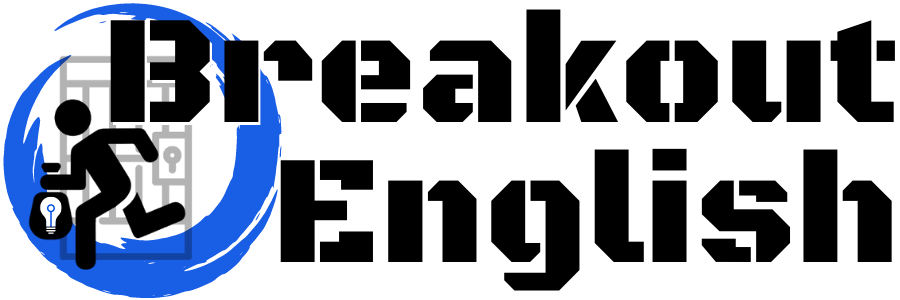I’ve long had a “less is more” mentality, for better or for worse, and with teaching I’ve found over and over that minimal materials activities can lead to some of the most engaging and productive moments in a class.
If you’re teaching online, minimal materials activities are easily adaptable to a platform like Zoom, Google Meet or Microsoft Teams with a little imaginative use of a digital whiteboard (like Jamboard which we discussed in another blog) and breakout rooms (great name). If you’re in a face-to-face classroom, basing lessons around these tasks is a great way to reduce paper usage and be environmentally conscious. I can’t tell you the number of times one of these tasks has saved my skin when I’ve got an extra 10 minutes at the end of class or had to run into a last minute substitution.
I can’t claim to have invented many or any of these activities. They have come from a wide range of chats with colleagues over the years or I’ve adapted them from popular classic games. What I have done is use them in class and I can vouch that every one of them is fun and engaging. Most of them can take as long or as little as you like, just change them, expand on them and make them your own until you’ve become a minimal materials master!
So, here we’ve got 10 minimal materials activities which need little more than a board, some pens, a ball and some willing students.

Contents
Picture Stories
Good for practising mixed tenses and insisting on accuracy.
- Think of an interesting event that happened to you which you can tell your class (you can always embellish if you want).
- Draw five pictures on the board (they don’t have to be good).
- Students discuss what the pictures are without any input from the teacher.
- Teacher tells students that the pictures are part of a story that happened to him/her.
- Students prepare yes/no questions to ask the teacher and discover the story.
- The teacher tells the whole story with details to the students.
- Extension 1: students write the story and the teacher monitors to ensure accuracy.
- Extension 2: students think of their own story or invent one and do the same activity in pairs or small groups.
Dynamic Disappearing Dictation Dialogue
Good for pronunciation, substitution, elipsis and paraphrasing.
- Start a short conversation with one student about anything (can be related to a class topic).
- Other students have to take notes about what was said.
- Recreate the dialogue on the board as closely as possible.
- Students practise acting out the dialogue in pairs.
- Teacher asks students to eliminate chucks (as many contiguous words as possible) while keeping the dialogue grammatically correct.
- Students practise again.
- Can be repeated until the dialogue is as minimal as possible.
- Analyse pronunciation, especially intonation, throughout.
Animated Augmenting Argument Analysis
Good for pronunciation, linking words and relative clauses.
- Start a short conversation with one student about anything (can be related to a class topic).
- Other students have to take notes about what was said.
- Recreate the dialogue on the board as closely as possible.
- Students practise acting out the dialogue in pairs.
- Add extra words or phrases to the dialogue (adjectives, adverbs, examples etc), making it as wordy as possible while remaining grammatically correct.
- Students practise again.
- Analyse pronunciation, especially intonation, throughout.
No Yes No No
Good for breaking the ice.
- Set up a hot seat at the front of the classroom.
- Person in the hot seat has to answer questions from the class but isn’t allowed to use the words yes or no.
- Topics can be suggested by the teacher if the class isn’t imaginative.
Pass the bomb
Good for recycling vocabulary from previous lessons.
- Generate a short list of categories and write them on the board. I always add a few from recently studied vocabulary. Categories which contain names of things are not allowed (e.g. celebrities, football teams, cities, brands).
- The class stands.
- Use a random timer app (many to choose from as downloadable apps) to keep the time. I definitely recommend getting one which is a bomb that ticks and explodes.
- Students pass around the ball and say one word from the category. Repeated words, mispronunciation and 1st language are banned.
- Individual play: the student who has the ball in their hands when the bomb explodes is eliminated.
- Team play: the team who doesn’t have the ball in their hands when the bomb explodes gets a point.
Last night, I went to the shop…
Good for practising articles, quantifiers, adjectives or adjective order.
- The teacher starts and says “Last night, I went to the shop and bought a ham sandwich.”
- The next student continues “Last night, I went to the shop and bought a ham sandwich and some diet coke.”
- Continues “Last night, I went to the shop and bought a ham sandwich, a diet coke and a few pencils.”
- Repeat indefinitely.
- If practising a specific word types, tell students they must use one or more of those words when they add a new item.
Answers Answers
Good for introducing a new topic.
- Someone leaves the room and the teacher asks the class questions, putting the answers only on the board.
- S comes back into the room and has to try to identify the questions (and therefore the topic) by asking the class or by the class giving clues.
The never-ending sentence
Good for conjunctions and linking words.
- Ss and T stand in a circle.
- T puts 1 word on the board to start a sentence.
- Ss pass a ball around and add one more word to the sentence, making it as long as possible.
- Once the sentence is up, highlight any errors that weren’t corrected in play.
- The phrase can then be used to highlight grammatical structures, upgrade language, identify connected speech etc.
Blind pictionary
Good for vocabulary revision.
- Using a scrap of paper, your computer screen, a mini whiteboard or a private chat message online, tell the words to the drawer.
- The drawer has 30 seconds to draw their word. During this time their team can shout out the answer (or write it on mini whiteboards).
- If their team doesn’t guess correctly, the opposing team has 10 seconds to guess and steal the point.
- The drawer must not open their eyes while drawing or they are eliminated and their team loses a point.
The floor is yours
Good for functional language and turn taking.
- One student or group of students is told they must agree no matter what, the other must disagree.
- The teacher writes a controversial topic on the board (this can be as serious or silly as you like).
- Students debate why they agree of disagree.
- For added engagement, set a time limit of a few minutes per topic.
- The teacher writes good language on the board and possibly elicits more between topics.
- Can be expanded into a full-class debate.
Do you have a minimal materials activity that you use a lot in class? Let us know about it in the comments below!

